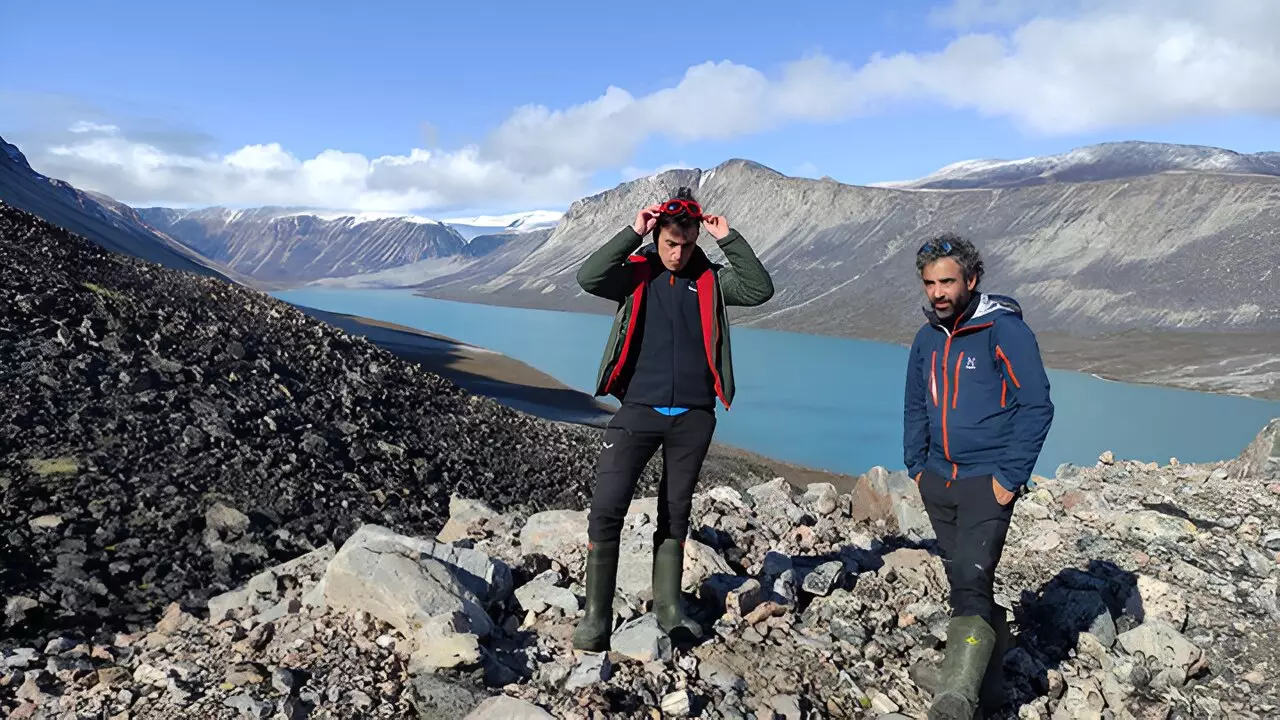

The melting ice of Greenland represents one of the more concerning indicators of climate change and its global repercussions. Recent research underscores an alarming trend: extreme melting episodes in Greenland have surged in frequency over the past few decades. These episodes not only affect the delicate Arctic ecosystem but also serve as a precursor to significant climatic shifts impacting Europe and beyond. The study from the University of Barcelona reveals a striking reality: the summers from 2000 to 2022 have experienced almost double the extreme melting events compared to earlier decades, particularly from 1950 to 1990.
To fully appreciate the gravity of the situation, it is essential to analyze the environmental data meticulously documented by researchers, including those from the Antarctica, Arctic and Alpine (ANTALP) group. Since 2012, records show extreme melting volumes that would fill a staggering 244 million Olympic-sized swimming pools in just one summer. The figures are eye-opening; in 2019 alone, 560 gigatons of ice melted, a stark reminder of the rapid changes occurring within this icy realm. Furthermore, average meltwater loss from 1980 to 2010 neared 300 gigatons annually, a volume projected to exacerbate as climate trends progress.
The extraordinary patterns of melting are closely tied to the dynamics of atmospheric conditions. The research elucidates how anticyclonic air masses, increasingly prevalent in the northern latitudes due to climate change, transport warmer and wetter air into Greenland’s winter. This leads to stagnant air over the ice, significantly boosting solar radiation absorption and reducing the natural reflective properties (albedo) of snow and ice. Such feedback mechanisms not only accelerate local melting but also create alarming structural changes within the ice sheet, which, in turn, contribute to further ice loss through iceberg calving and glacier flow into the ocean.
What is particularly unsettling is the extent of melting in regions previously untouched during the mid-to-late 20th century. The researchers indicate that higher altitudes of the ice cap, historically stable, now exhibit signs of rapid ice melt and cracking. Such structural deterioration hints at future catastrophes, where large sections of ice may break free and contribute to rising sea levels. Experts predict that these melts are likely to escalate in severity as temperatures in polar regions rise sharply in tandem with global warming trends.
Greenland’s ice loss poses undeniable risks not just locally, but across the globe, particularly regarding sea-level rise. This can have disastrous consequences for coastal cities and low-lying nations. Moreover, disruptions in atmospheric circulation patterns are likely to affect climatic conditions in Europe, highlighting a complex interplay of regional ecosystems and global weather systems. Such changes could jeopardize agriculture, increase the frequency and severity of weather extremes, and challenge socio-economic stability across northern Europe.
In light of these revelations, the study emphasizes an urgent need for proactive climate action. The researchers articulate a clear message: addressing greenhouse gas emissions is not just an environmental imperative but an existential one. With projections adding to the urgency of the crisis, it is crucial that individuals, governments, and organizations mobilize efforts to combat the impacts of climate change decisively.
As we continue to witness the ramifications of climate change, the plight of Greenland’s melting ice serves as a critical reminder of the fragility of our planet. Its implications reach far beyond the Arctic, influencing global climate patterns and challenging our very existence. The time for action is now, as safeguarding our environment is not merely the responsibility of a few, but a collective duty to ensure a sustainable future for generations to come.
In the realm of software development, the ability to swiftly and accurately address bugs is…
The realm of quantum computing and communication is not just an abstract dream anymore; it…
In a remarkable leap for the field of material science, a collaborative research initiative has…
Throughout Earth's vast history, our planet has endured five major mass extinction events that reshaped…
Rainfall is a vital element of our planet’s hydrological cycle, yet many aspects of its…
On a night when the universe aligns, a mesmerizing phenomenon awaits: the appearance of the…
This website uses cookies.